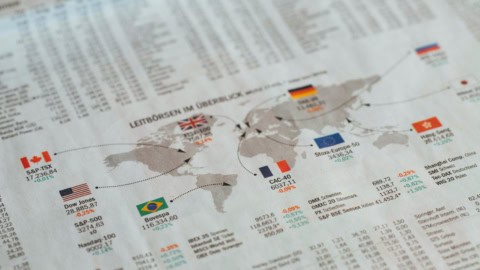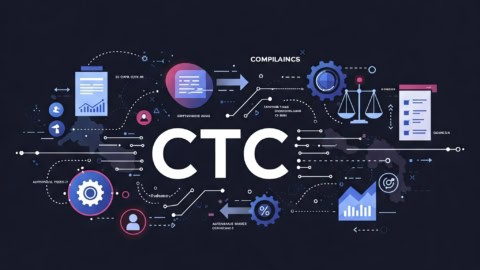As the global movement towards digitalisation accelerates, businesses are being compelled to adapt not only their operational processes but also their compliance strategies. Nowhere is this shift more evident than in the evolving landscape of VAT compliance and reporting requirements. With governments leveraging technology to enhance data collection and analysis, businesses must navigate increasingly stringent and complex regulatory environments.
To provide insights into how organisations can prepare for these changes and remain compliant, we spoke with Gunjan Tripathi, EMEA Director, Solutions Marketing at Vertex Inc. In the following interview, Gunjan shares her expert perspective on the impact of digitalisation on VAT compliance, the challenges posed by real-time reporting requirements, and what businesses must prioritise to stay ahead of regulatory developments.
————————————————————————
How has the global movement towards digitalisation impacted businesses’ VAT compliance and reporting requirements?
In recent years, governments have made a conscious effort to upgrade their technological capabilities in order to collect, analyse, and compare taxpayer data more efficiently and accurately. In the European Union, Member States now consolidate and analyse tax data, meaning businesses are required to provide more detailed information more frequently. The shift from paper-based VAT returns to online submissions and API-driven processes reflects this evolution, with a growing emphasis on improving data quality, transparency and security.
Processes that previously allowed for extended preparation times now demand near real-time data reporting with upfront accuracy and granular transactional information. This has compressed compliance & reporting timelines, increased complexity, and necessitated updates to current systems and workflows to ensure data is clean, accurate, and compliant from the outset.
How do you see VAT regulations evolving over the next few years?
Over the coming years we’re likely to see a continuation of the current trend towards digitalisation and transparency. We’re also already seeing a greater focus on cross-border regulations as governments seek to eliminate opportunities for Missing Trader Intra-Community (MTIC) fraud, with initiatives like VAT in the Digital Age (ViDA) bringing more cross-border transactions under scope of local VAT reporting. Enabled by technology, tax authorities will soon be capable of collecting, sharing, and analysing data across jurisdictions, providing greater visibility into business operations and allowing for benchmarking against industry standards.
While tax authorities have historically been focussed solely on theoretical and legal frameworks, modern legislation now also mandates specific IT processes for data reporting and compliance. This trend towards a more detailed “show your working” approach reflects tax authorities’ growing appetite for visibility of how businesses derive and report their VAT calculations.
As supply chains become more complex and commerce accelerates, technology is transforming compliance from a reactive process into a real-time – sometimes even predictive – activity, allowing businesses and tax authorities to track and allocate tax obligations seamlessly.
How do you see VAT regulations influencing business decisions?
As VAT is inextricably tied to a business’s bottom line, having a proper understanding of VAT requirements is essential for developing pricing strategies and fostering smoother interactions with customers and partners. Proactively addressing VAT considerations with business partners can also reduce friction, improve cash flow, and minimise delays in payments, ensuring that tax compliance doesn’t become a barrier to successful commercial transactions or international expansion.
What should companies prioritise in their VAT compliance strategy to stay ahead of potential regulatory changes?
For me, the key priority should be data integrity. Ensuring clean, traceable data that originates from a single source of truth is critical for accurate and efficient reporting. Good data integrity enables businesses to adapt data for varying requirements across tax authorities while maintaining a consolidated and centralised view of operations.
Tax should also never be treated as an afterthought. It needs to be a central component during planning. By integrating tax compliance into operational and technological frameworks from the outset, businesses enable direct, real-time access to accurate data, reducing the need for retrospective corrections and building resilience against future regulatory changes.
What are the primary ways businesses can optimise their VAT processes to remain competitive?
I would recommend that businesses focus on standardising their processes across jurisdictions wherever possible. A unified approach to VAT reporting, with minimal reliance on country-specific solutions, allows for better oversight, reduced resource dependency, and improved efficiency. Investing in holistic systems or partners that cater to multiple requirements will streamline operations and maximise the return on technology and personnel investments. While some edge cases may require tailored solutions, maintaining a centralised, flexible framework is key to sustainable and continuous VAT compliance, while staying competitive for business operations.
As tax authorities adopt new digital reporting tools, what compliance issues should companies anticipate?
Tax audits today are not simply concerned with whether or not you have interpreted the law correctly. Increasingly, auditors are analysing data trails and identifying anomalies through statistical testing and regressions. In order to withstand this increased technical scrutiny, businesses should ensure data is as clean and consistent as possible.
How do you anticipate the EU’s VAT in the Digital Age (ViDA) initiative will impact VAT compliance and reporting for businesses?
In a nutshell, ViDA’s goal is to streamline cross-border transactions and enhance transparency by introducing uniform e-invoicing standards for even domestic transactions across Member States. This harmonisation will require businesses to adopt invoicing systems that comply with the new EU-wide standards, moving away from disparate national regulations. Consequently, companies must invest in technology and training to ensure their invoicing processes align with these forthcoming requirements.
Additionally, ViDA’s emphasis on real-time or near real-time reporting will mean that businesses will have to maintain up-to-date and accurate transaction records. This shift is designed to improve VAT collection efficiency and reduce fraud. However, it also means that companies will need to enhance their data management practices and ensure seamless integration between their accounting systems and tax authorities’ platforms. While these changes may present initial challenges, they should ultimately lead to a more efficient and transparent VAT system across the EU.
What steps should companies start taking now to prepare for the upcoming changes associated with the ViDA initiative?
There are two clear things that companies should be doing to prepare for ViDA. First, as we’ve already mentioned, companies must prioritise data quality and consistency, as without good data all optimisation initiatives are doomed to fail. Secondly, businesses should consider transitioning from a point solution approach to a centralised process and technology solution. Given the complexity of new reporting regulations and the speed at which country-specific legislation is being introduced, attempting to handle changes manually would be unfeasible. By contrast, enlisting the help of a dedicated solution provider offers an efficient and cost-effective way to ensure compliance and audit-readiness moving forward.
What are the top three pieces of advice you would give businesses to prepare for future VAT and tax policy shifts?
Firstly, it would be advisable to establish a centralised tax policy and operational methodology to maintain consistency across jurisdictions. Secondly, businesses should conduct a thorough supply chain analysis to understand and manage tax exposures effectively. And last, but not least, businesses should get IT and finance teams to implement standardised and compliant processes, as standardisation is a prerequisite for optimisation.
But these steps take time, so it’s important not to put them off!
























